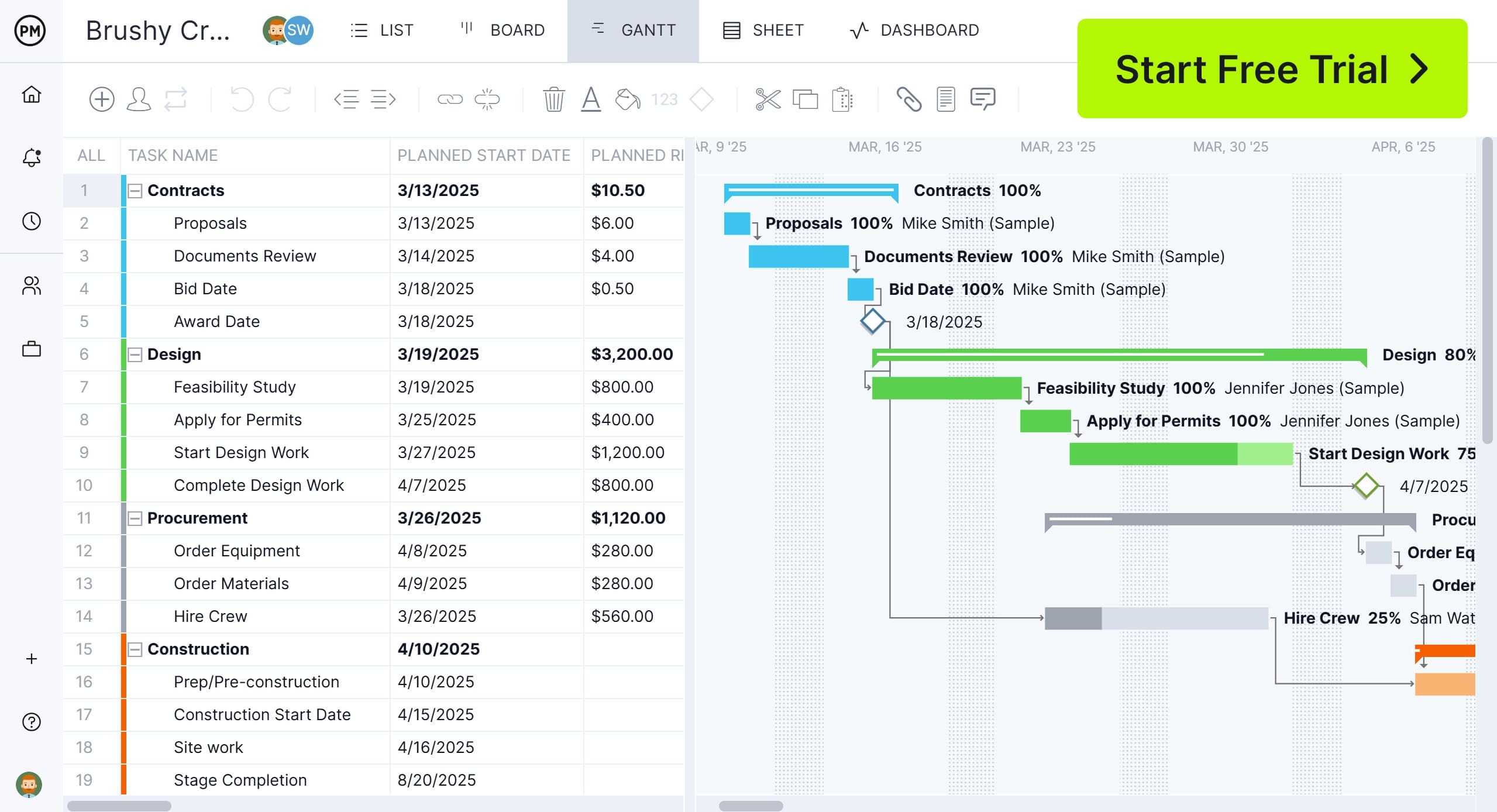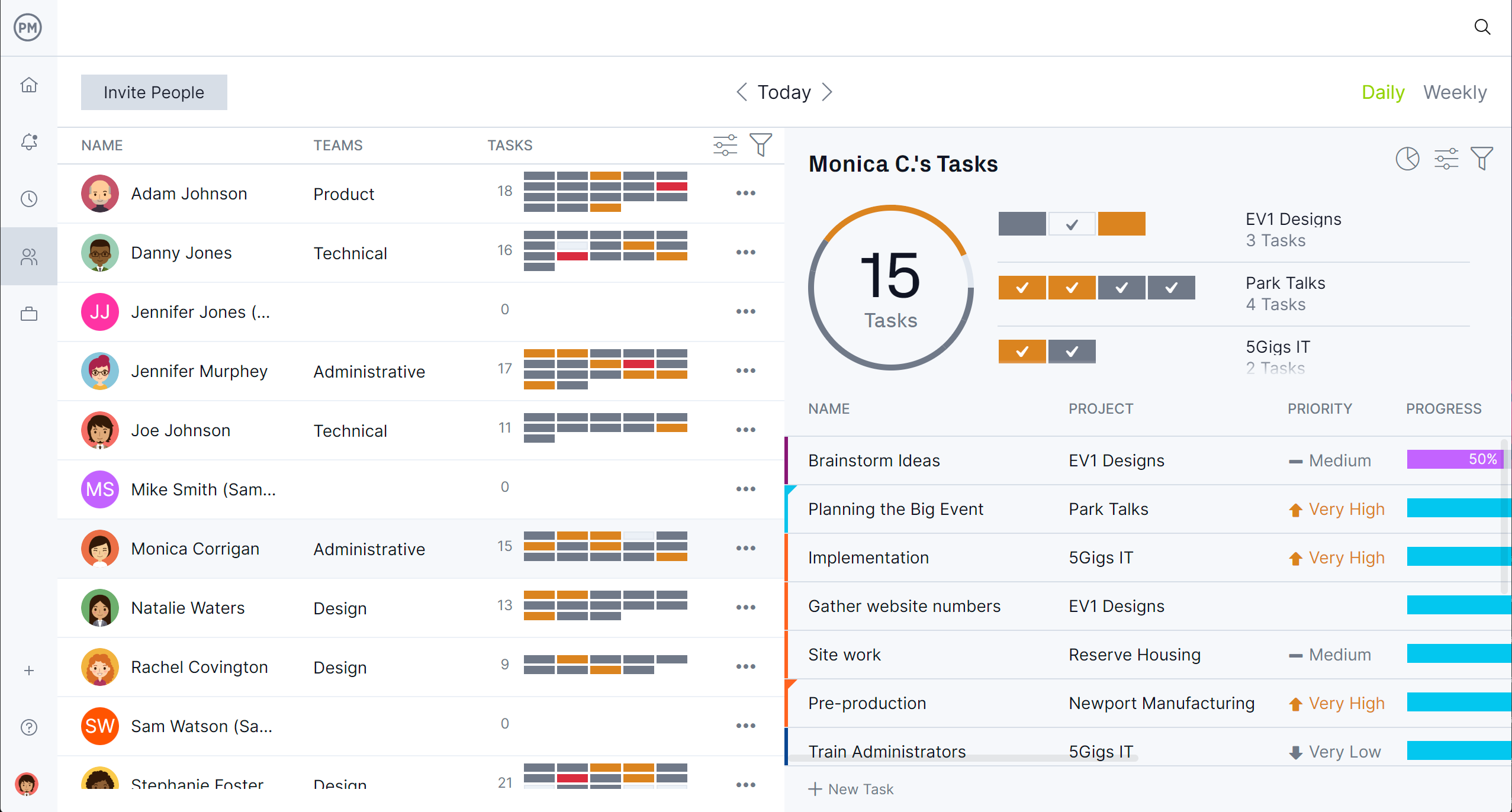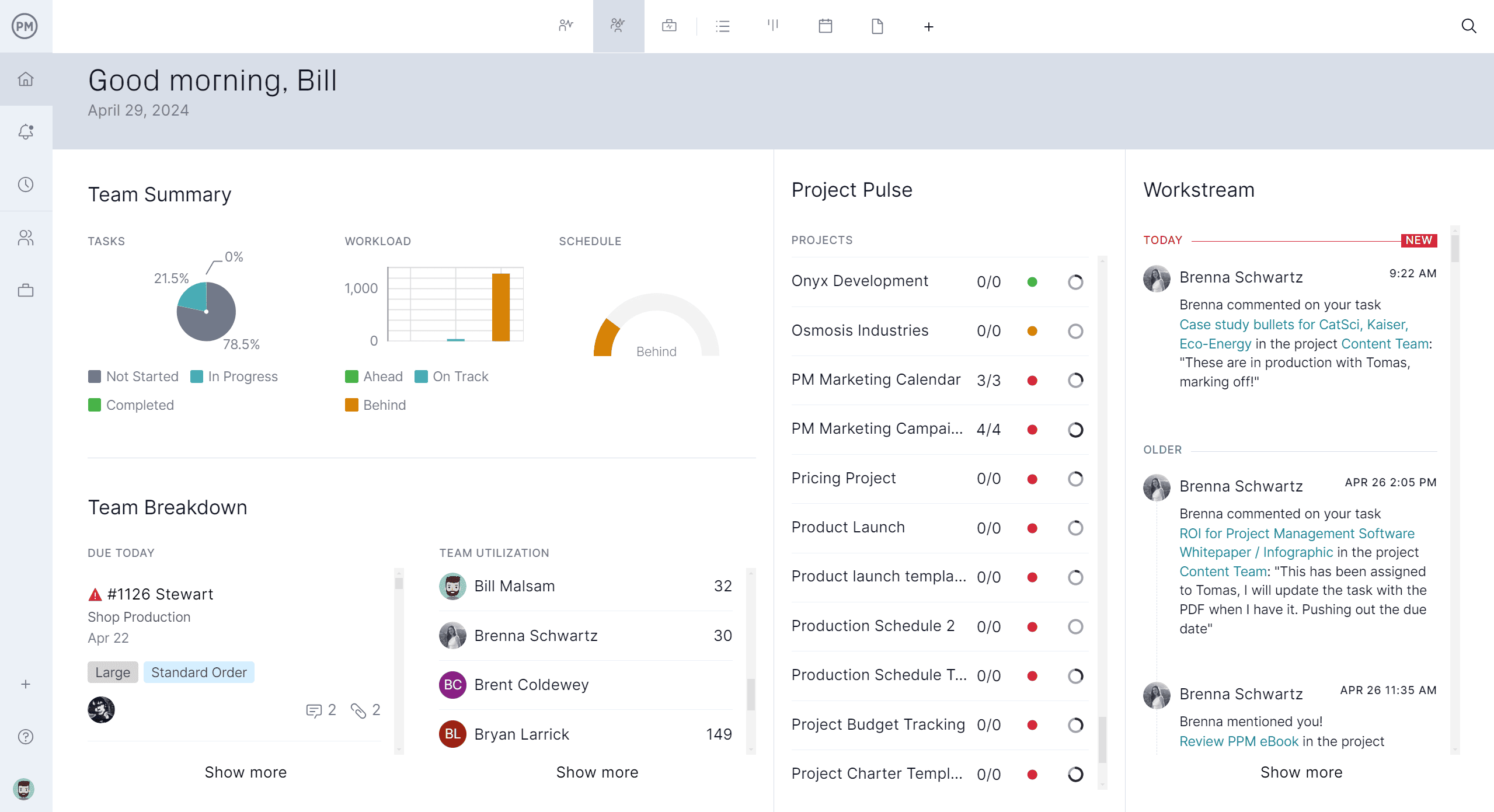The executive sponsor plays a critical role in the success of any major project or program. Positioned at a senior level within the organization, this individual serves as the main link between the project team and top leadership, ensuring that strategic goals remain at the forefront throughout execution. Their involvement helps secure the visibility, support and resources a project needs to stay on track and deliver lasting value.
While the project manager typically handles day-to-day management, the executive sponsor provides high-level oversight and guidance. They help remove roadblocks, champion the project across departments and maintain alignment with broader business priorities. Their leadership can often make the difference between a stalled effort and a successful outcome.
What Is an Executive Sponsor?
An executive sponsor is a senior leader who takes ownership of a project at the strategic level, ensuring that it aligns with the organization’s broader goals and delivers real business value. Unlike the project manager, who handles the day-to-day execution, the executive sponsor provides top-level direction, secures funding and resources, and acts as the key liaison between stakeholders and the project team. Their role is to champion the initiative across the organization, helping to resolve conflicts, drive engagement and keep the focus on outcomes rather than just tasks. A strong sponsor can accelerate decision-making and keep projects from stalling due to lack of support or clarity.
The importance of the executive sponsor lies in their ability to provide visibility and influence at the leadership level. They help ensure that projects remain a priority amid competing demands and shifting business environments. Their support often determines whether projects receive the necessary attention, funding and authority to succeed. Without an engaged sponsor, even well-planned projects can suffer from misalignment, internal resistance or lack of direction. The executive sponsor plays a key role in risk mitigation, strategic alignment and overall accountability, making their involvement vital to project and portfolio success.
Project management software can support executive sponsors by giving them access to real-time insights into project performance, timelines and resource usage without requiring deep involvement in daily operations. With centralized dashboards, reporting tools and visual overviews, they can monitor progress, assess risks and quickly identify areas that need executive intervention. This allows them to stay informed and engaged without micromanaging the project team, making their oversight both efficient and impactful.
ProjectManager is award-winning project and portfolio software that is especially valuable for executive sponsors because it offers high-level visibility across all active projects in a single platform. Features like interactive Gantt charts help them visualize timelines and dependencies, while real-time dashboards provide instant status updates on performance, budgets and team workload.
Customizable reports allow sponsors to track KPIs and progress against strategic goals, and the roadmap view offers a portfolio-wide perspective to ensure everything stays aligned. With ProjectManager, executive sponsors have the tools they need to lead with confidence, stay strategically focused and drive successful outcomes. Get started with ProjectManager today for free

Does the Executive Sponsor Fund the Project?
An executive sponsor does not typically fund the project personally, but they play a critical role in securing and managing the funding at the organizational level. As a senior leader—often from the department that benefits most from the project—the executive sponsor advocates for the project’s financial needs and ensures it receives the necessary budget approval from company leadership or the governing board.
Here’s how their involvement in funding typically works:
- Budget Advocacy and Approval: The executive sponsor champions the project during budgeting discussions and justifies its strategic value. They help ensure the project is prioritized during financial planning and often present or support the business case to leadership, the steering committee or the finance department.
- Securing Initial Funding: Once a project is greenlit, the executive sponsor ensures that funding is allocated and released promptly. They may negotiate for additional funds or defend the budget if constraints or competing priorities arise.
- Managing Financial Oversight: While the project manager monitors the detailed budget execution, the executive sponsor keeps an eye on high-level financial performance. They intervene if the project faces overruns or if significant scope changes impact the budget.
- Contingency and Escalation: If unexpected financial needs emerge, the executive sponsor steps in to escalate the issue and potentially secure additional resources or adjust expectations with stakeholders.
In short, the executive sponsor is not the source of the funds but is the key enabler of funding—they unlock the budget, protect it and ensure it aligns with strategic priorities throughout the project lifecycle. Their influence and organizational authority are crucial to maintaining financial support from initiation to delivery.
Executive Sponsor Responsibilities
An executive sponsor plays a vital leadership role by guiding a project from conception to completion while ensuring it aligns with organizational strategy. Unlike the project manager, who handles execution, the sponsor operates at a higher level, removing barriers, making critical decisions and representing the project’s value to executive leadership. Their responsibilities span strategic input, financial support and stakeholder engagement—making them key to delivering successful outcomes. Below are the core responsibilities every project sponsor typically holds.
Championing the Business Case
The project sponsor is responsible for developing and promoting the business case that justifies the project’s initiation. They define the problem or opportunity, articulate the expected benefits and align the proposal with strategic objectives. Their advocacy ensures the project gets approval and remains a priority.
Providing Strategic Direction
Sponsors help set the project’s direction by ensuring it aligns with broader business goals. They communicate high-level expectations to the project manager and make sure objectives remain clear, even when project scope shifts or challenges arise. This alignment helps the project deliver long-term value.
Securing Funding and Resources
A key responsibility of the sponsor is ensuring that the project receives the financial and human resources it needs. They negotiate for funding, protect the budget and help allocate the right personnel to keep the project moving forward.
Liaison Between Project Team and Executive Leadership
The sponsor acts as a bridge between the project team and the organization’s executive leadership. They communicate updates, raise concerns and provide executive oversight, ensuring leadership remains informed and invested in the project’s success.
Building Stakeholder Support
Executive sponsors engage with stakeholders across departments to secure buy-in and reduce resistance. They help clarify the project’s value, manage expectations and build a coalition of support that makes implementation smoother and more successful.
High-Level Decision Making
When escalated issues arise, the project sponsor steps in to make high-level decisions that impact scope, timeline or budget. Their authority enables timely resolutions that keep the project on track and prevent delays caused by indecision or organizational red tape.
Leading Benefits Realization
Even after the project is delivered, the sponsor plays a role in ensuring that intended benefits are tracked and realized. They evaluate whether the expected outcomes were achieved and may help adjust operations or strategy to maximize the return on investment.

Executive Sponsor vs. Project Sponsor
While the executive sponsor and project sponsor roles often overlap in purpose—both are key to project success—they differ in scope, authority and organizational focus. The executive sponsor typically operates at the highest leadership level, often part of the C-suite or senior management. Their role is more strategic, focused on aligning the project with organizational priorities, securing enterprise-level support and making high-impact decisions that affect the portfolio.
In contrast, the project sponsor tends to be more directly involved with the project itself, often coming from the department that will benefit from the outcome. While they may still operate at a leadership level, their focus is narrower—providing tactical support, managing stakeholder expectations and guiding the project team toward delivering specific business outcomes.
The project sponsor works closely with the project manager, ensuring the day-to-day direction aligns with strategic goals set by the executive sponsor. In some organizations, one person may serve both roles, but when split, they complement each other by balancing strategic oversight with operational involvement.
Related: 40 Project Management Skills: Soft, Hard & Technical Skills
Executive Sponsor vs. Project Owner
The executive sponsor and project owner both play leadership roles in a project, but they focus on different aspects and responsibilities. The executive sponsor is typically an executive or senior leader who champions the project at a strategic level. They secure funding, provide direction, remove roadblocks and ensure the project aligns with organizational goals. Their role is largely external to the project’s day-to-day operations, focusing on advocacy, governance and high-level decision-making.
The project owner, on the other hand, is more closely tied to the business side of the project and is often responsible for defining requirements, overseeing implementation and ensuring that the final deliverables meet the needs of the business. They serve as the primary representative of the users or department receiving the solution and are often involved throughout the project lifecycle to make operational decisions and validate progress. While the executive sponsor ensures the project happens, the project owner ensures it delivers the right value.
What Skills Should an Executive Sponsor Have?
An executive sponsor plays a key leadership role in driving a project’s success, so they must possess a strong blend of strategic, interpersonal and decision-making skills. These skills enable them to guide the project from initiation through delivery, overcome organizational challenges and maintain alignment with business goals. Below is a list of essential skills every effective project sponsor should have.
- Strategic Thinking: Ability to align the project with organizational goals and long-term business strategy.
- Decision-Making: Confidence in making high-level calls quickly to keep the project on track and resolve major issues.
- Communication: Skilled in clearly conveying vision, expectations and updates to stakeholders and executive leadership.
- Influence and Advocacy: Can promote the project across departments, secure buy-in and overcome resistance.
- Financial Oversight: Understands budgeting principles and can secure and defend project funding as needed.
- Leadership: Provides direction and support to the project manager and serves as a visible, engaged champion.
- Risk Management: Identifies potential threats to the project and supports mitigation strategies at the portfolio level.
- Stakeholder Management: Builds and maintains relationships with internal and external stakeholders to ensure support and alignment.
How ProjectManager Helps Executive Sponsors & Project Managers
ProjectManager helps both executive sponsors and project managers stay aligned and informed with its flexible multiple project views. Whether a team member prefers to work in a Gantt chart, task list, kanban board or calendar, each view stays synced so everyone sees real-time updates. For executive sponsors, the roadmap view offers a high-level timeline that connects all projects to broader strategic goals, making it easier to oversee progress without getting bogged down in daily details. Project managers, on the other hand, can use these views to manage workflows, allocate tasks and monitor deadlines efficiently.
Manage Resources and Balance Workloads
Our resource management features give both roles the visibility and control they need. Sponsors can view team workload across the entire portfolio to ensure staffing levels are aligned with strategic priorities. Project managers can use built-in tools to assign resources based on capacity, balance workloads and forecast availability.
The platform’s resource calendars and workload charts reduce the risk of overallocation and help ensure that critical initiatives have the support they need from start to finish. The team page shows daily and weekly activity, can be filtered by priority or progress and team tasks updated without leaving the page.

Keep Projects on Schedule and Within Budget
Tracking features are key for keeping projects on schedule and within budget. Our real-time dashboards display live data on task completion, time logged, budget usage and more—making it easy for sponsors to see the big picture and for project managers to drill down into details.
Automated reports can be customized and shared with stakeholders to maintain transparency and accountability. Together, these tools enable proactive decision-making, helping both executive sponsors and managers stay ahead of potential issues and lead projects to successful outcomes.

Related Project Management Content
An executive sponsor is only one part of the larger project management process. For those that are curious to learn more about this subject, check out the links below. They lead to recently published articles on the basics of project management, essential documents, skills and more.
- Project Management Basics: Definitions, Methods and Tools
- 8 Project Plan Examples (Templates Included)
- 20 Essential Project Documents
- 22 Project Management Tools & Techniques
- 40 Project Management Skills: Soft, Hard & Technical Skills
- What Is a Project Director? Role, Responsibilities and Salary
ProjectManager is online project and portfolio management software that connects teams whether they’re in the office or out in the field. They can share files, comment at the task level and stay updated with email and in-app notifications. Join teams at Avis, Nestle and Siemens who are using our software to deliver successful projects. Get started with ProjectManager today for free.

